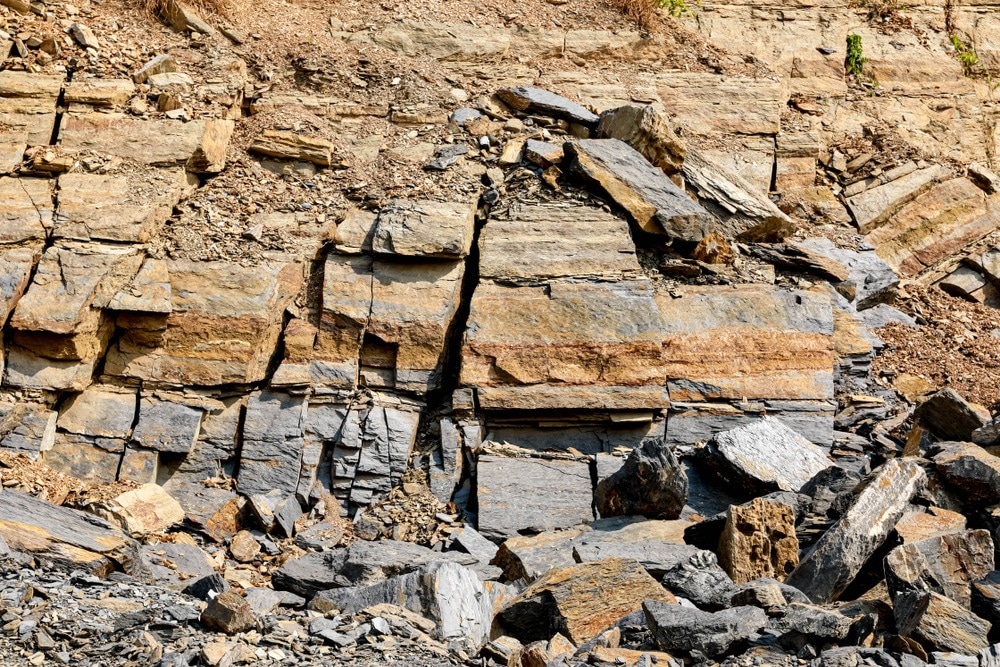Reliable carbonate carbon isotopes (δ13Ccarb) mirror differences in global carbon cycling, and as a result, the paleoclimate and paleoceanographic conditions. However, during the late Pennsylvanian to early Cisuralian, substantial depositional hiatus in low-latitude areas took place.

Image Credit: somsak nitimongkolchai/Shutterstock.com
Repeated subaerial exposures and stratigraphic discontinuities might have possibly changed the primary δ13Ccarb signals, which collectively hindered a valid worldwide correlation during this time. A global δ13Ccarb record is rarely established for chemostratigraphy correlation and global carbon cycle modeling.
Scientists from the Nanjing Institute of Geology and Palaeontology (NIGPAS) of the Chinese Academy of Sciences, guided by Ph.D. student Wenli Yang and Prof. Jitao Chen, researched sedimentary facies and high-resolution carbonate δ13C at Pennsylvanian and Cisuralian carbonate slope successions of the South China Block.
The researchers published their findings in Global and Planetary Change on January 28th, 2023.
During the Pennsylvanian and Cisuralian periods, the South China Block was situated in the low-latitude region at the intersection of the eastern Paleo-Tethys Ocean and the western Panthalassic Ocean.
Numerous sedimentary facies formed in South China from the Pennsylvanian to the Cisuralian, ranging from carbonate platforms to regional slopes and basins well associated with open ocean waters, possibly recording a global seawater geochemical signal.
In this research, thorough sedimentary facies analysis and high-resolution δ13Ccarb time series from the late Pennsylvanian to the early Cisuralian suggested that δ13Ccarb documented in Luodian Basin slope carbonates could be a reliable proxy for global carbon cycling.
All across Carboniferous-Permian transformation, the well-coupled δ13Ccarb, atmospheric pCO2, and the indicated glacial records revealed a clear linkage between the accelerated rate of organic carbon burial and the apex of the Late Paleozoic Ice Age.
The decoupling of δ13Ccarb and atmospheric pCO2 from the middle Asselian to the mid-late Sakmarian proposed that elevated silicate weathering played a dominant role in atmospheric pCO2 drawdown and sustained glaciation.
The sudden negative excursion in δ13Ccarb correlated with the dramatic increase in atmospheric pCO2 and a significant decline in inferred glacial records, implying that continuous greenhouse gas accumulation may have driven the transition from icehouse to greenhouse climate states.
Journal Reference:
Yang, W., et al. (2023) Sedimentary facies and carbon isotopes of the Upper Carboniferous to Lower Permian in South China: Implications for icehouse to greenhouse transition. Global and Planetary Change. doi.org/10.1016/j.gloplacha.2023.104051.